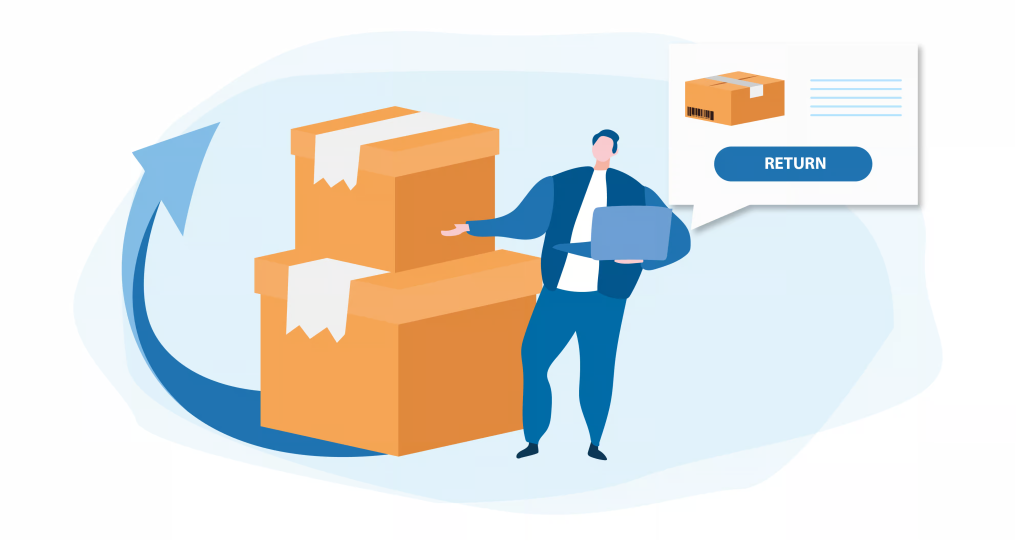In the world of e – commerce, Shopify dropshipping has emerged as a popular business model. However, handling returns in this model can be a bit tricky. Understanding the return process is crucial for maintaining customer satisfaction and the smooth operation of your business.

I. The Significance of a Well – Organized Return Process
A. For Customer Satisfaction
- Building Trust
- When customers know that there is a reliable return process in place, they feel more confident about making a purchase. For example, if a customer is considering buying a unique piece of jewelry from your Shopify dropshipping store, the assurance of being able to return it if it doesn’t meet their expectations can tip the scale in your favor. This trust can lead to increased customer loyalty and positive word – of – mouth.
- Resolving Issues Promptly
- A well – defined return process allows you to address customer issues quickly. If a customer receives a defective product, a seamless return process ensures that they get a replacement or a refund without unnecessary delays. This prompt resolution can turn a potentially negative experience into a positive one.
B. For Business Sustainability
- Maintaining Supplier Relationships
- In dropshipping, your relationship with suppliers is vital. Handling returns properly means interacting effectively with suppliers. If you can demonstrate that you can manage returns in an organized manner, suppliers are more likely to continue working with you and may even offer better terms in the future.
- Avoiding Financial Losses
- Without a proper return process, you could face financial losses. For instance, if you refund a customer without getting a refund from the supplier first, you could end up bearing the cost of the product. A well – structured return process helps prevent such losses.
II. Step – by – Step Guide to Handling Returns in Shopify Dropshipping
A. Customer Requests
- Receiving the Request
- The return process begins when a customer contacts you with a return request. This could be through email, the contact form on your Shopify store, or other communication channels. Make sure to respond to the customer promptly, acknowledging their request and letting them know that you are looking into it.
- Gathering Information
- Ask the customer for details such as the order number, the reason for the return (e.g., the product is defective, doesn’t fit, or they changed their mind), and the condition of the product. This information will be useful when dealing with the supplier.

B. Obtaining an RMA Number
- Contacting the Supplier
- Once you have the customer’s information, reach out to the supplier. Explain the situation and request a Return Merchandise Authorization (RMA) number. Most suppliers have a specific process for handling returns, and the RMA number is a crucial part of it.
- Following Supplier Instructions
- The supplier may have specific requirements for returns, such as how the product should be packaged or what documentation needs to be included. Make sure to communicate these instructions clearly to the customer.
C. Refunding the Customer
- Waiting for the Supplier’s Refund
- After the customer has shipped the product back to the supplier (following the supplier’s instructions), wait for the supplier to process the return and issue a refund. This may take some time, depending on the supplier’s internal processes.
- Refunding the Customer
- As soon as you receive the wholesale price refund from the supplier, it’s time to refund the customer. Use the refund functionality in your Shopify store to process the refund. Make sure to refund the full amount that the customer paid, including any shipping costs if applicable.
III. Tips for Optimizing the Return Process
A. Clear Communication
- Pre – purchase Information
- Provide clear information about your return policy on your Shopify store. Let customers know the time frame within which they can return products, the conditions for returns (e.g., the product must be in its original packaging), and how long it will take to process their refund.
- During the Return Process
- Keep the customer informed at every step of the return process. Let them know when you have received their return request, when you have requested an RMA number from the supplier, and when you have received the refund from the supplier.
B. Building Strong Supplier Relationships
- Regular Communication
- Communicate with your suppliers regularly, not just when there is a return. Build a good rapport with them so that when issues arise, they are more likely to be cooperative.
- Understanding Supplier Policies
- Familiarize yourself thoroughly with your suppliers’ return policies. This knowledge will help you handle returns more efficiently and avoid misunderstandings.

In conclusion, handling returns in Shopify dropshipping requires a systematic approach. By following these steps and implementing the tips, you can ensure that the return process is as smooth as possible for both your customers and your business.




